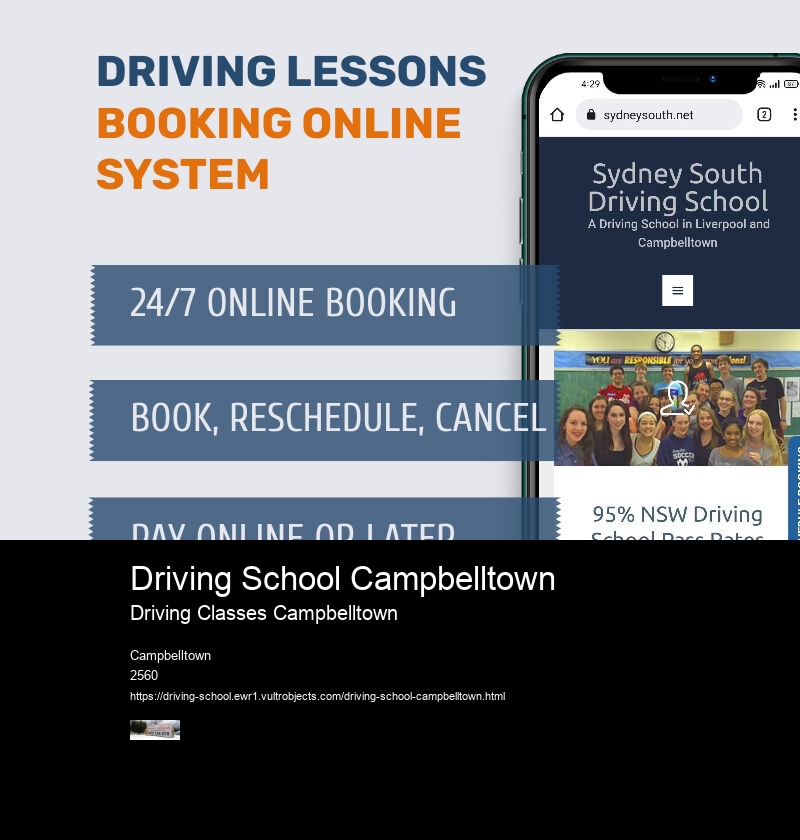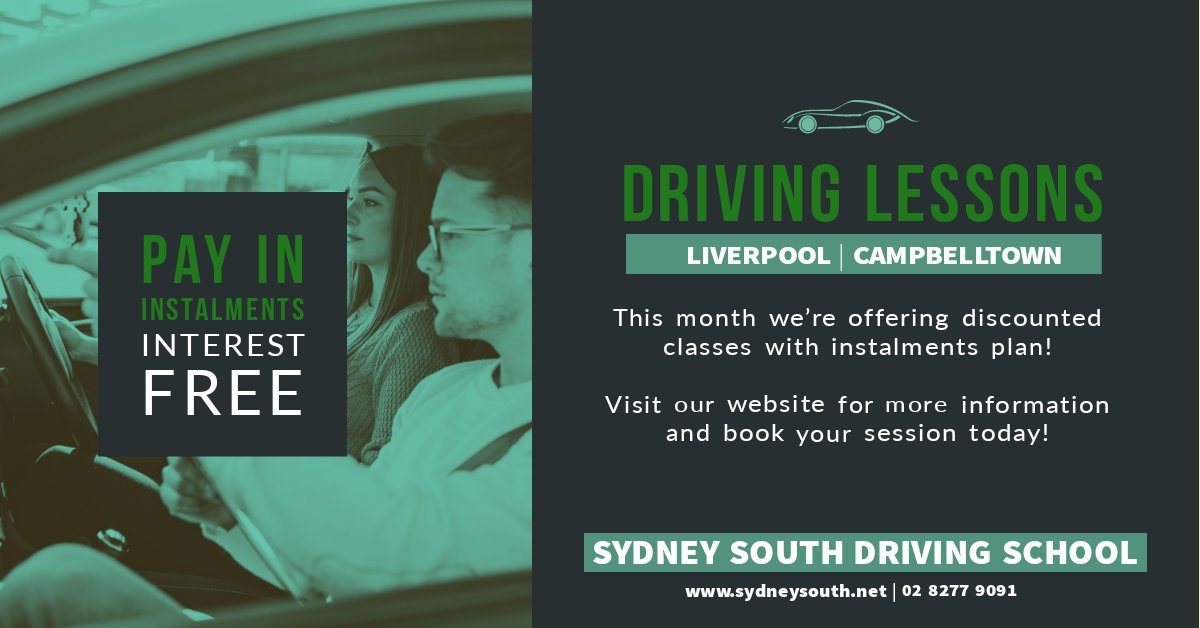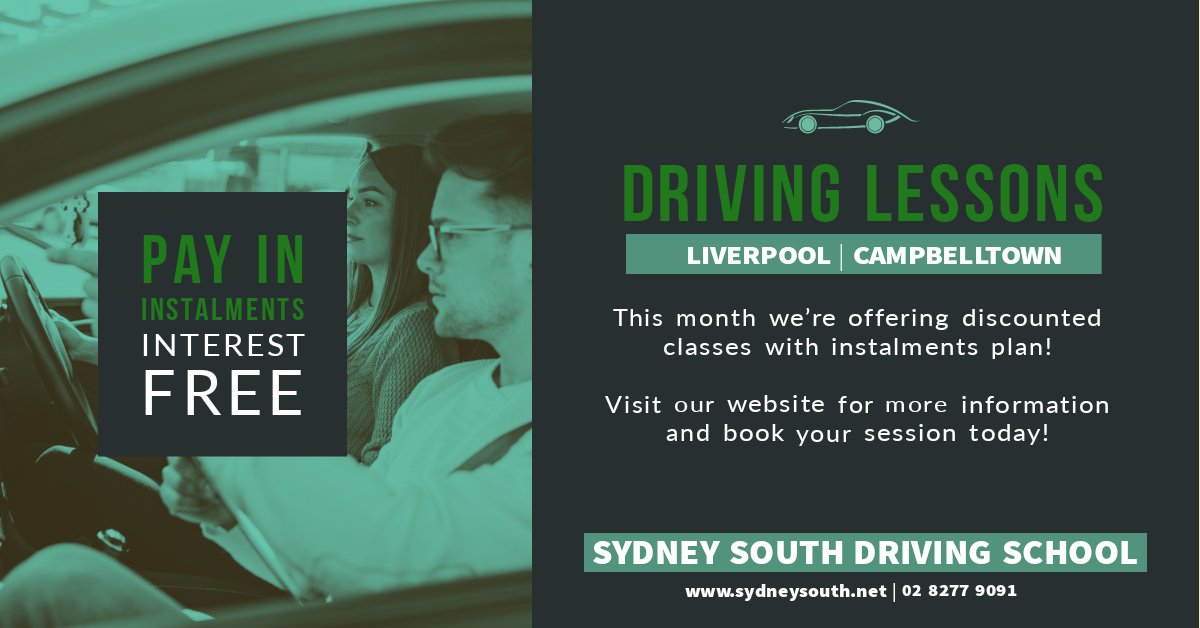Driving School Campbelltown
Driving instructors near me
To help pupils learn to drive, the instructors at the driving school employ a variety of teaching approaches and strategies. They use visual aids such as diagrams and films to assist students grasp various driving principles, and they provide plenty of hands-on practice to help students improve confidence and competence.
A driving school is a facility that offers professional training to anyone who want to learn how to drive a car. It is a location where students can gain the knowledge and abilities essential to become safe and responsible drivers on the road.
Driving schools provide a variety of programs to accommodate drivers with varying degrees of expertise. Some schools offer starter classes for people who have never driven before, while others offer advanced courses for experienced drivers who want to improve their skills. Individuals who want to obtain a commercial driver's license or learn how to operate specific types of vehicles can also take specialized courses.
A driving school's curriculum often involves both classroom teaching and hands-on driving practice. Traffic regulations, road signs and markings, defensive driving tactics, and car maintenance are all covered in the classroom. Driving under the supervision of a professional teacher who provides feedback and direction to the learner is part of the hands-on practice sessions.

Driving instructors near me
One of the key advantages of attending a driving school is that it helps the learner gain confidence on the road. Learning to drive can be a frightening experience, especially for individuals who have never driven before. Driving schools offer a safe and regulated environment in which students may learn and practice their driving abilities without risk of endangering themselves or others.
Driving schools help to lower the likelihood of accidents in addition to boosting confidence. When compared to those who learn to drive on their own, students who receive professional training are less likely to be involved in accidents. This is due to the fact that driving schools teach students how to manage various driving circumstances, such as bad weather, high traffic, and emergency situations.
Another benefit of enrolling in a driving school is that it saves time and money in the long run. Students who learn to drive on their own may take longer to master the necessary abilities, resulting in more time spent practicing and more costs for vehicle repairs due to accidents. Students who attend a driving school, on the other hand, are more likely to pass their driving tests on the first try, which can save them time and money in the long run.
Overall, enrolling in a driving school is a wise investment for anyone who wants to learn how to drive safely and responsibly. It teaches the required skills and information to become a confident and experienced driver, lowering the risk of accidents and saving time and money in the long term.
Driving classes near me
Driving classes are intended to help people become better, safer drivers. There are driving courses available to match your needs, whether you're a novice driver just starting out or an experienced driver wishing to enhance your skills.
Some of the advantages of taking a driving course are as follows:
Defensive driving techniques: Defensive driving is the practice of driving in such a way that the likelihood of an accident is reduced. A good driving training will teach you to be aware of your surroundings, foresee potential hazards, and respond effectively in order to avoid accidents.
Understanding driving regulations: driving laws can be complex and perplexing. A driving course will teach you the rules of the road and how to obey them. This might assist you in avoiding traffic charges and remaining safe on the road.

Driving lessons prices
Gaining confidence: Getting behind the wheel can be scary for inexperienced drivers. A driving course can boost confidence by offering a secure setting in which to practice driving abilities.
Insurance discounts: Many insurance companies provide discounts to drivers who have taken a driving school. This is due to the fact that drivers who have completed a course are typically thought to be safer and more responsible on the road.
There are numerous kinds of driving classes offered, including:
Driving course near me
These courses are aimed for new drivers and cover the fundamentals of driving, such as starting and stopping the car, turning, and parking.
Defensive driving classes: These classes teach defensive driving tactics as well as how to avoid accidents.
sophisticated driving courses are intended for experienced drivers and cover more sophisticated driving tactics such as high-speed driving and emergency maneuvers.
Teen driving classes: These courses are created exclusively for teens and include subjects such as distracted driving, peer pressure, and the dangers of driving while intoxicated.
It is critical to evaluate your own needs and goals while selecting a driving course. Make sure to thoroughly research the course and select a reputable provider. You can become a safer, more confident driver and enjoy the numerous benefits of driving with the correct driving course.
Driving School CampbelltownCheap driving lessons
Obtaining a driver's license is a requirement for lawfully driving a car. However, if you intend to relocate to another country, you may need to convert your foreign license to a local license. Converting your overseas license might be a complicated process that varies based on the country you are transferring to.
Here are some things to consider when converting your foreign license:
Investigate the local regulations: The rules for converting an international license can vary substantially between countries. Some countries may require a driving test, while others may only require a written or vision test. To minimize surprises, research the local requirements ahead of time.
Driving classes for adults
Check the validity of your license: Your abroad license may not be valid in the new nation in specific instances. Some countries have reciprocal agreements that allow drivers to use their foreign license for a limited time, but others require you to obtain a local license as soon as you arrive.
Gather the following documents: You will normally be required to produce confirmation of identity, domicile, and your driving history in order to convert your overseas license. This may include your passport, proof of address, and your home country's driving record.
Consider taking a driving course: If you are obliged to take a driving test, a driving course can help you prepare. Even if you are not needed to take a driving test, attending a course might help you become acquainted with local driving rules and road conditions.
Be prepared for any delays: Converting your abroad license can take time, so plan accordingly. It is best to begin the process as soon as possible to avoid any problems with driving lawfully in the new nation.

What should I expect in a driving course?
A driving course typically consists of both classroom instruction and behind-the-wheel practice sessions with a licensed instructor. In the classroom, you'll learn about driving laws, rules of the road, and defensive driving techniques. You'll also have the opportunity to ask questions and engage in class discussions. During the behind-the-wheel practice sessions, you'll have the chance to apply what you've learned in real-world driving situations under the guidance of an experienced instructor.
Do I need to have a learner's permit to take a driving course?
Most driving courses require that you have a learner's permit before you can begin behind-the-wheel practice sessions. However, some schools may offer classroom-only courses that do not require a permit. Check with your driving school to see what their specific requirements are.
How long does a driving course usually take?
The length of a driving course can vary depending on the school and the specific course you're taking. In general, however, most driving courses consist of around 30 hours of classroom instruction and 6-10 hours of behind-the-wheel practice. Some courses may be completed in a few weeks, while others may take several months to complete.